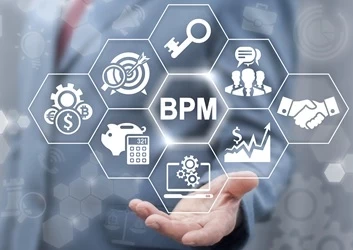Empower good processes with strong communication
Discover how a focus on communication processes can eliminate fear and confusion while driving increased engagement
Add bookmark
Processes matter. In today’s world, we are seeing daily examples of how good processes could be the difference between life and death. Testing and distributing vaccines, following personal protective equipment protocols and managing populations during an unprecedented pandemic are all activities that stand or fall on sound procedures.
Alongside those essential processes are another set of guidelines that are often neglected. Communication processes are the frameworks that direct the flow of information – information that makes those life and death procedures functional.
From education to collaboration, communication processes are the ones that help reduce confusion, eliminate fear, clarify expectations and solidify actions. Those resolves do not occur by accident. They are the result of careful and deliberate information sharing that makes other processes visible and viable. Without great communication processes, the vital practices of any organization can get lost, bogged down or simply ignored. When communication fails, business processes will not be far behind.
So, what goes into great communication processes?
The medium is the message
Not all communication channels are equal. Updating your shopping list by text message is fine; updating your marital status the same way is not. An animated video clip is great for a product teaser or training module, but not appropriate as a response to a disaster. It is important that your customers and staff understand the intent of the messages they are getting, and no small part of that comes from the channel through which you choose to communicate.
Make sure your communication processes clarify which channels are appropriate for which tasks. There are plenty of options to choose from including mobile apps, social networks, video conferencing platforms, online forums, intranets, emails and instant messaging tools. Do not forget the more personal touch of phone calls, video calls and in-person meetings, where possible. They are less convenient and more challenging to make happen, but send a much stronger message.
Account for engagement
Communication is not a one-way street. People are going to want to respond to your messages, whether they are promotions or apologies. Build that awareness into the communication processes you employ. How do you expect the recipients to respond? What avenues have you made available for them? How is your team going to turn that response into a conversation that benefits all parties?
This includes sharing your communication within their own networks. Make sure you provide adequate information, and in a format that can easily be passed on. Social media is ideal for shareable content, but keep in mind the purpose of the message and how you expect the content to be utilized.
Clarify the content
It should be obvious, but the content of your communication needs to be carefully considered. All the technology and pipelines in the world cannot help if your message is muddled or incomplete.
Make sure there are checks in place to validate your messaging before it is sent. What is it that you are trying to say? What is the key information to be conveyed, and what should the takeaway be for recipients? While the team responsible for creating the messaging might be convinced it is ready to go, an external eye may well pick up inconsistencies or any lack of clarity around the core message. Think about the questions any reasonable recipient might ask and consider how those have been addressed.
Also check in with the key stakeholders of the content. Has there been adequate consultation with all the right people before this announcement? Who should be tasked with signing off the messaging? Build those checks into the process to ensure nothing is released without being completely ready.
Know your limits - and your audience’s
Time is precious for everyone. Research shows that on average, only 52 per cent of online video viewers will watch a video clip to the end. That number creeps up to 68 per cent if the overall video length is under 60 seconds. Imagine the drop-off on a rambling ten-minute clip about company updates. Keep content as concise as possible.
That goes for written content, too. Blogs, emails, forum posts and reports need to be informative but effective. Ensure your communication processes respect peoples’ time by limiting the volume and length of your messages to what is necessary.
Keep it clean
Important communication can be undone by bad grammar. Make sure your communication practices include the use of spellchecks, proofreaders or writing and grammar apps that check the quality of the written content. At the very least, have any significant communication read over by a second member of the team to validate the final product.
That also covers the style of the language used. Establish a style guide for written communication, and link it to your communication processes. The tone and voice of your company should be consistent and suited to the expected audience. Inappropriate language or variations in style and voice will diminish the impact of the message and could do significant harm to your company’s reputation.
The pursuit of effective and efficient business processes is a key part of the success of many enterprises. Those processes need to include communication. Without a clear guide for distributing information, you risk those hard-won procedures being lost or ignored. But with great communication processes alongside them, your people will know exactly what they need to know, and when they need to know it.





























